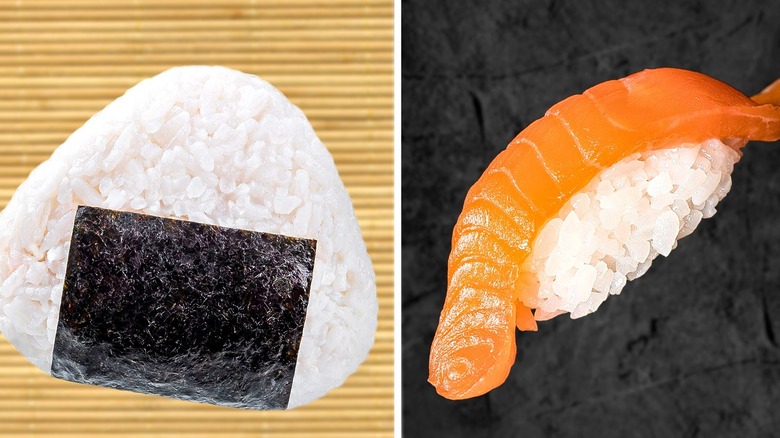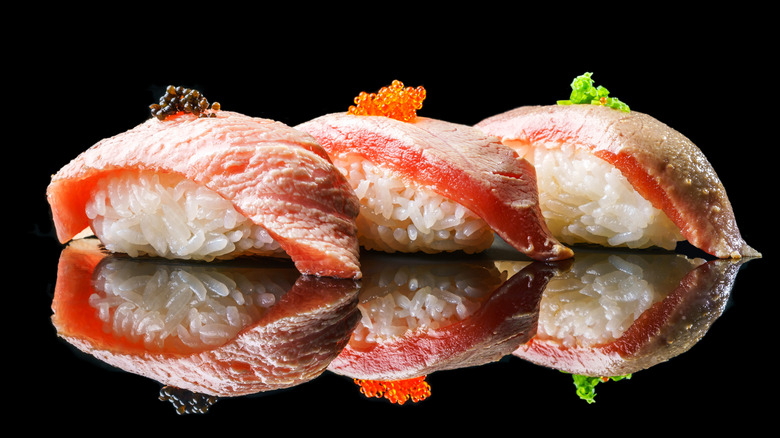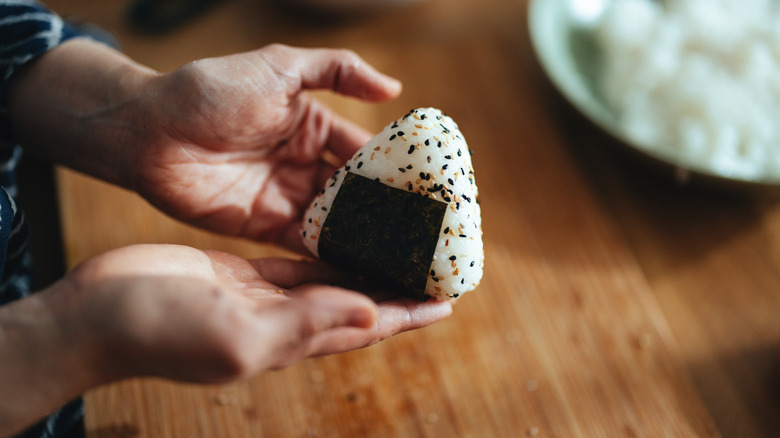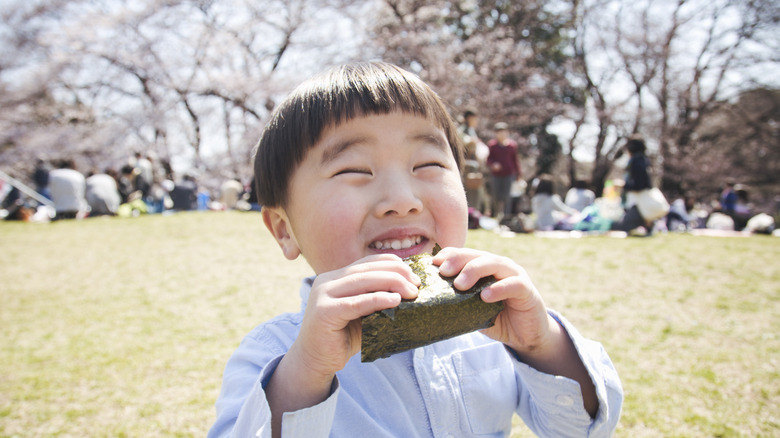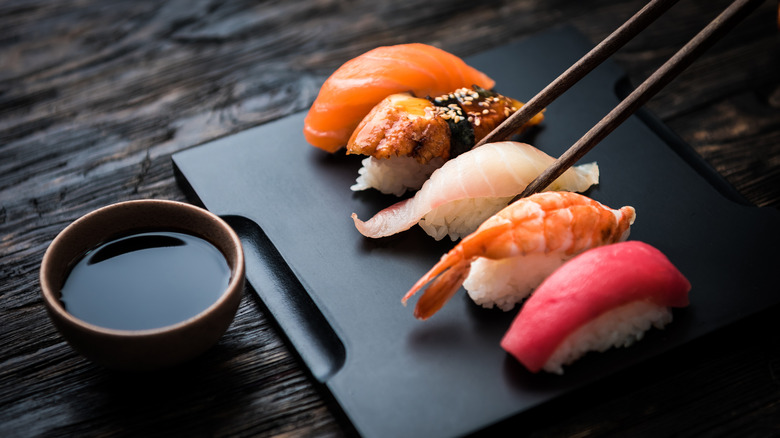The Flavorful Difference Between Nigiri And Onigiri
In Japan, rice is a central component of cuisine and has been a staple of the diet for almost three millennia. Found in different varieties and preparations, it's helpful to be well-versed in its range to understand the nation's cuisine. Dishes like the ingredient-topped donburi and the world-famous sushi are easy to delineate. However, preparations like nigiri and onigiri are trickier.
After all, both are made from pressed shapes of short-grain rice, paired with a ranging assortment of proteins. Yet their styles of enjoyment couldn't be more different. Onigiri is a convenient snack, crafted in varying shapes and sometimes stuffed for a filling pick-me-up. Conversely, nigiri are meticulously formed morsels of rice topped with high-quality — oftentimes raw — seafood. Expect to find both in a wide-ranging array of variations as well as restaurant settings. Each style is worth a try; their distinct taste and tradition showcase the versatility of rice in Japanese cuisine.
What is nigiri?
Nigiri is one of the most popular varieties of sushi in Japan. Rather than being crafted with nori into a roll, they're instead comprised of a gently molded pillow of rice topped with a slice of fish — typically raw. Classic fish examples include salmon, amberjack, varying tuna cuts, mackerel, and snapper. However, the rice can also be topped with cooked squid, shrimp, eel, or omelet, meaning that fish isn't a strict requirement.
As a type of sushi, nigiri employs seasoned sushi rice, which is flavored with sugar and vinegar. Forming the rice requires deft technique with careful forming and pressing with wet hands. The fish is sliced into a precise size and angle and gently placed on top of the rice. To finish, chefs may also add a dash of wasabi underneath the fish as well as a sweetened soy sauce glaze brushed on top. Nigiri is typically served alongside a dipping bowl of soy sauce and pickled ginger.
What is onigiri?
Larger onigiri is a delicious snack comprised of a large rice shape stuffed with a variety of fillings. Classic shapes include cylinders, spheres, and triangles, which are also referred to as omusubi. The employed rice is short-grain, an essential characteristic to ensure the onigiri sticks together. However, it's made sans any vinegar and sugar seasoning. Instead, chefs form the rice snack with salt on their hands and sprinkle on furikake, a spice made from dried seaweed and herbs. The outside of the onigiri is also frequently wrapped with nori.
The filling of onigiri takes on extensive possibilities. Traditional options include umeboshi, salted salmon, tuna with mayo, or mentaiko roe. Some versions leave out an interior stuffing altogether, allowing the furikake to function as the dominant flavor. Modern renditions incorporate creative ingredients like cheese, kimchi, or tofu. The dish's essential quality is the careful forming of rice with wet hands and a gentle touch to avoid the fracturing of eye-catching shapes.
Onigiri are consumed in more casual settings
The aesthetically packaged onigiri is all about portability. Over their 2,000-year existence, the dish was optimized for travel. Older versions were filled with pickled ingredients to enhance the shelf-life of the rice. The food appears in numerous historical records as either a military ration or the first snack sold aboard trains. Today, onigiri remains as popular as ever, available at nearly every convenience store, supermarket, and as a street snack. They're enjoyed in lunchtime bento boxes and at transit centers, making them a casual food bursting with flavor.
Meanwhile, nigiri is consumed primarily inside sushi restaurants as a course in an extensive seafood meal. The dish comes with a proper eating technique meant to highlight the fish placed atop the rice. Just like onigiri, the food is consumed by hand. Although, for nigiri, there's a precise ritual of flipping each piece, dipping it into the soy sauce, and devouring it in one bite. As a result, nigiri is a component of a more formal, sit-down occasion rather than a convenient food for on the go.
Nigiri is a vessel for fresh seafood
Nigiri are deftly crafted individual bites made to emphasize the flavor of seafood on a vessel of tasty rice. Some sushi restaurants serve the dish as a platter with up to a dozen varying seafood ingredients at once. More traditional establishments sell the sushi bites in pairs, with an a la carte selection of the desired seafood type. Upscale sushi restaurants can include up to fifteen nigiri courses as part of an omakase. Each nigiri piece comes out one by one so that the meticulously prepared seafood can be slowly savored.
Conversely, onigiri aren't made to highlight their fillings — after all, the internal ingredients are optional. Home cooks can even incorporate leftovers into a batch of onigiri. The aim is to be comforting and satiating while allowing rice to be enjoyed in a convenient form. Don't expect to find onigiri with freshly butchered tuna — for such a purpose, there's always nigiri to enjoy.
